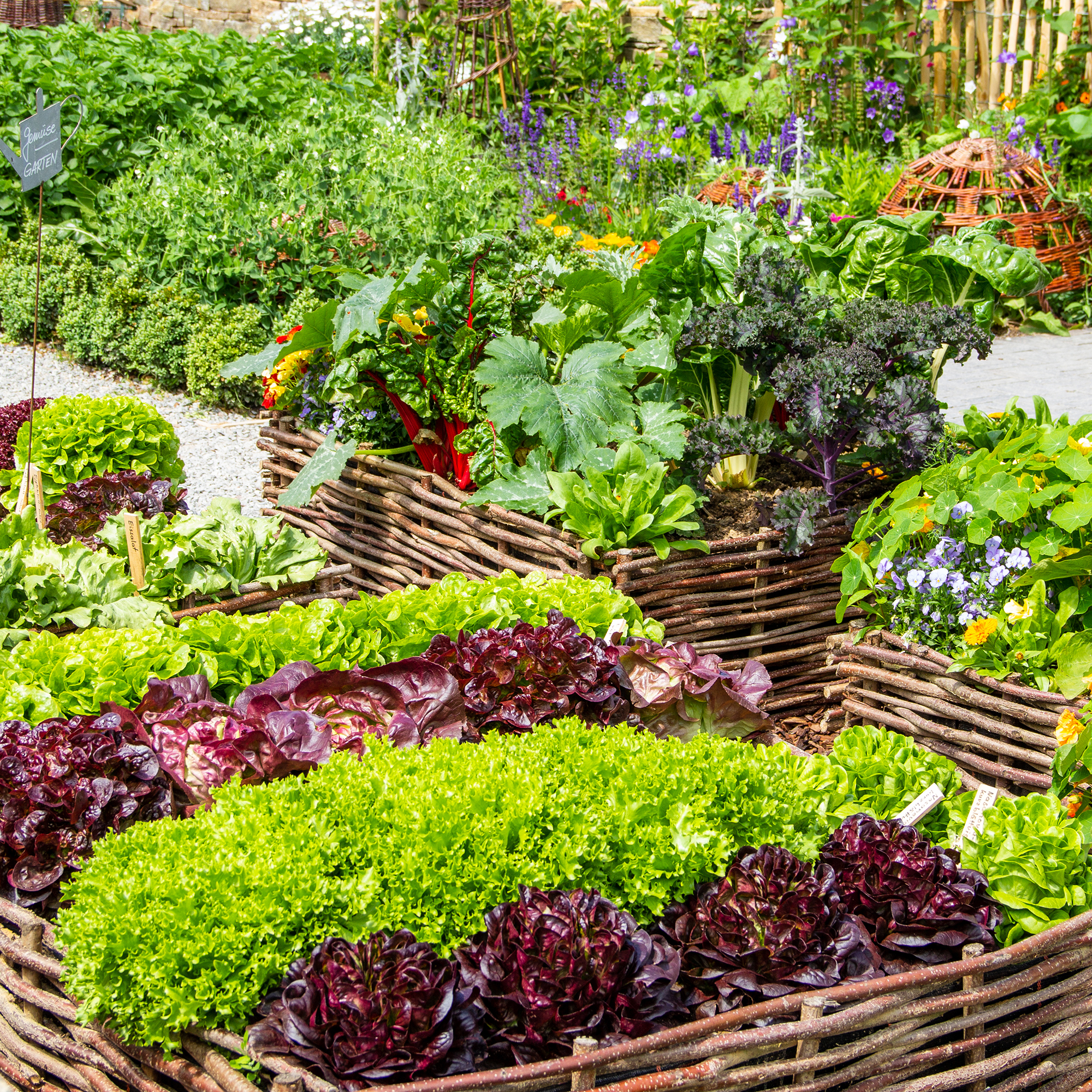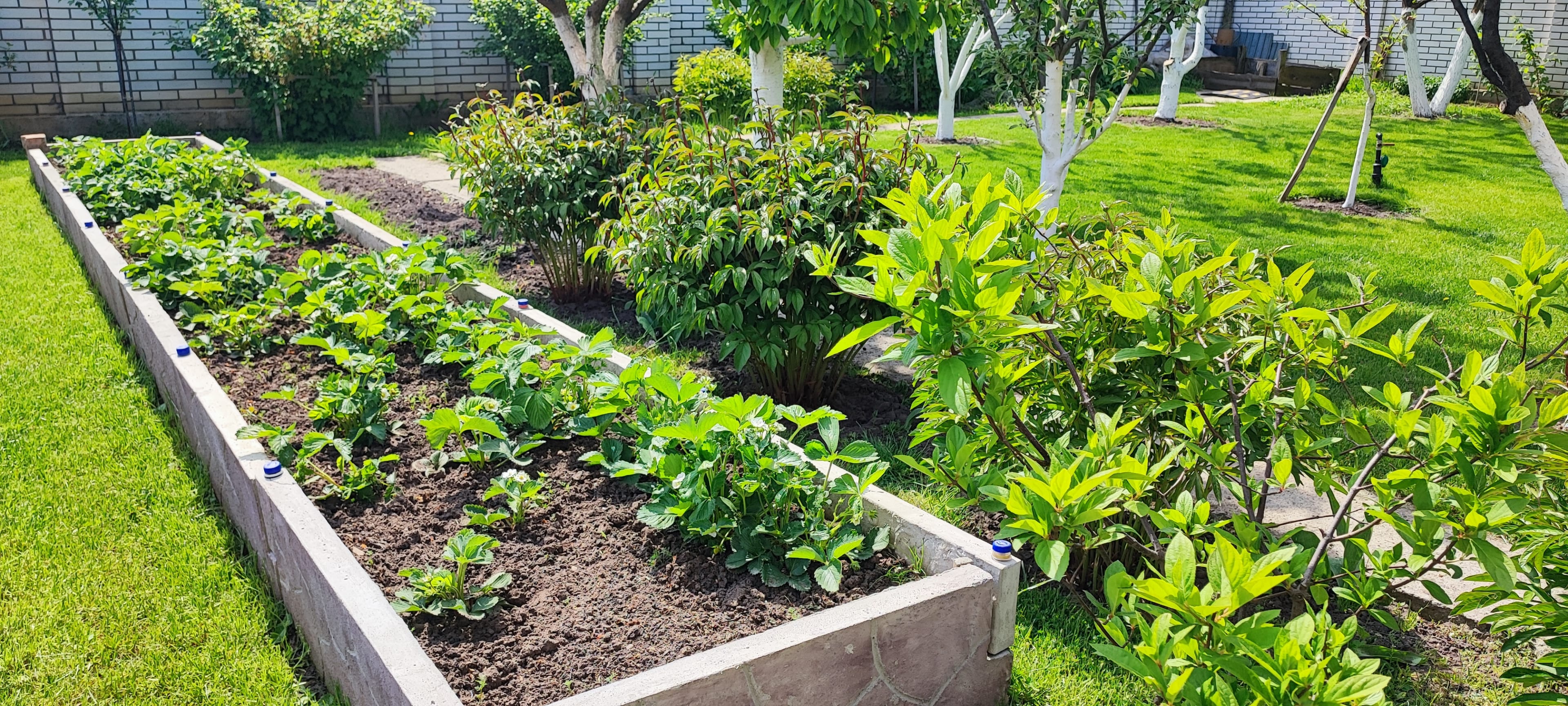Have you ever wanted to grow your own fresh vegetables and herbs right at home? Starting organic gardening might be easier than you think.
Imagine picking ripe tomatoes or fragrant basil from your own garden, knowing exactly what went into growing them. This guide will show you simple, practical steps to begin your organic garden, even if you’ve never planted a seed before. By the end, you’ll feel confident and excited to create a healthy, thriving garden that benefits both you and the environment.
Let’s get started!
Choosing The Right Spot
Choosing the right spot is the first step in starting an organic garden at home. The location affects how well your plants will grow. It also impacts how much time you spend caring for them. A good spot offers the right light, soil, and space for your plants.
Assessing Sunlight And Shade
Most vegetables and flowers need at least six hours of sunlight daily. Watch your yard at different times. Notice where the sun shines the longest. Avoid areas blocked by trees or buildings. Some plants like partial shade. Know what your plants need before choosing the spot.
Soil Quality Basics
Healthy soil helps plants grow strong and healthy. Test your soil for texture and nutrients. Look for soil that drains well but holds some moisture. Avoid places with hard or sandy soil. You can improve soil by adding compost or organic matter. Good soil means fewer problems with pests and diseases.
Space Considerations
Think about how much space your garden needs. Some plants need more room to spread out. Leave space for walking and caring for plants. Avoid tight spots where plants may crowd each other. Plan for future growth so your garden stays healthy and neat.

Credit: www.gardeningknowhow.com
Selecting Organic Seeds And Plants
Selecting the right seeds and plants is the first step in organic gardening. Healthy seeds grow into strong plants. These plants produce fresh, chemical-free food for your home. Choosing organic seeds helps avoid harmful pesticides and synthetic chemicals. It supports natural growth and better soil health. Understanding the types of seeds and where to buy them matters a lot.
Heirloom Vs Hybrid Seeds
Heirloom seeds come from plants passed down for many years. They keep the same traits, like taste and color. Heirloom plants often taste better and have unique looks. They also help preserve plant diversity. Hybrid seeds come from two different plants. They often grow faster and resist some diseases. But hybrid seeds may not produce the same quality in the next generation. Choose heirloom seeds for tradition and flavor. Pick hybrids for quick growth and disease resistance.
Finding Certified Organic Sources
Buy seeds labeled as certified organic. These seeds grow without synthetic chemicals or pesticides. Certified organic seeds meet strict farming standards. Check for trusted certification labels on the package. Avoid seeds from unknown or non-organic sellers. Local organic seed companies often provide high-quality seeds. Buying from these sources supports organic farming. It also helps ensure your garden stays chemical-free and healthy.
Preparing The Soil Naturally
Preparing the soil naturally is the first step in organic gardening at home. Healthy soil helps plants grow strong and resist pests. It keeps water and air balanced for roots. Natural soil preparation avoids chemicals and protects the environment.
Composting At Home
Composting turns kitchen scraps and garden waste into rich soil food. Fruit peels, vegetable scraps, and dry leaves work well. Compost adds nutrients and improves soil texture. A small compost bin fits in most backyards or balconies. Stir the pile every week to help break down materials. Use finished compost to feed plants and keep soil lively.
Using Natural Fertilizers
Natural fertilizers give plants important nutrients without chemicals. Manure, bone meal, and fish emulsion are good choices. They release nutrients slowly and improve soil health. Spread natural fertilizers before planting or during growth. Avoid overusing fertilizers to protect roots and water supply.
Soil Testing Techniques
Testing soil helps understand what it needs. Simple kits measure pH, nitrogen, phosphorus, and potassium. Take samples from different garden spots for accuracy. Adjust soil by adding lime to raise pH or sulfur to lower it. Knowing soil health guides better plant care and improves growth.
Planting And Spacing
Planting and spacing are key steps in organic gardening. Proper planting helps your plants grow strong and healthy. Good spacing gives each plant enough room to get sunlight, air, and nutrients.
Planting too close can cause problems. Plants may compete for water and food. Crowded plants can also get sick more easily. Correct spacing helps avoid these issues and boosts plant growth.
Seed Starting Tips
Start seeds indoors to give young plants a good start. Use clean containers and fresh soil. Keep the soil moist but not too wet. Place seeds at the right depth. Follow the seed packet instructions for best results. Provide enough light to help seedlings grow strong.
Proper Plant Spacing
Check each plant’s spacing needs before planting. Leafy greens need less space than large vegetables like tomatoes. Space plants so leaves do not touch each other. Leave enough room for air to flow between plants. This reduces the risk of disease and pests.
Crop Rotation Benefits
Change the location of your crops each season. This helps keep the soil healthy and fertile. Crop rotation stops pests from building up in one spot. It also prevents soil nutrients from running out. Rotate crops with different nutrient needs for best results.
Watering And Mulching
Watering and mulching are key steps in organic gardening at home. Both help plants grow strong and healthy. Proper watering keeps roots moist without wasting water. Mulching protects soil and keeps moisture longer. These practices improve plant health naturally.
Efficient Watering Methods
Water plants early in the morning or late afternoon. This reduces water loss from heat and wind. Use drip irrigation or soaker hoses to deliver water directly to roots. Avoid overhead watering to prevent leaf diseases. Check soil moisture by touching it. Water only when the soil feels dry one inch below.
Mulch Types And Benefits
Organic mulches include straw, leaves, grass clippings, and wood chips. They break down over time and add nutrients to soil. Mulch helps keep soil temperature steady. It stops weeds from growing and reduces water evaporation. Spread mulch about two to three inches thick around plants. Keep mulch a little away from plant stems to prevent rot.

Credit: dengarden.com
Managing Pests Organically
Managing pests organically is a key part of successful home gardening. It protects your plants without harmful chemicals. Organic pest control keeps your garden healthy and safe for your family and pets.
Organic methods focus on balance. They help control pests but also support beneficial insects and soil health. You learn to work with nature, not against it.
Natural Pest Deterrents
Use plants that repel pests naturally. Marigolds and basil keep many insects away. Garlic and chives also act as strong deterrents. Plant these near your vegetables to protect them.
Mulching with cedar or pine needles can discourage bugs. Neem oil is a natural extract that stops many pests. Avoid synthetic sprays that harm the environment.
Encouraging Beneficial Insects
Invite helpful insects into your garden. Ladybugs, lacewings, and praying mantises eat harmful pests. Plant flowers like dill, fennel, and yarrow to attract them.
Keep a water source nearby for these insects. Avoid pesticides that kill both pests and helpers. This balance makes your garden stronger over time.
Homemade Organic Sprays
Create your own sprays using simple kitchen ingredients. A mix of water, garlic, and soap can deter many bugs. Spray it on affected plants every few days.
Use neem oil diluted with water for a natural pesticide. Always test sprays on a small plant area first. Homemade sprays are safe and reduce chemical use.
Maintaining Your Garden
Maintaining your organic garden keeps plants healthy and productive. It helps prevent pests and diseases from spreading. Regular care makes your garden look neat and vibrant. Simple daily tasks build a strong garden over time.
Regular Weeding Techniques
Weeds compete with your plants for water and nutrients. Remove weeds by hand to avoid harming your crops. Pull weeds when the soil is moist for easier removal. Use a hoe to cut weeds just below the soil surface. Check your garden often to catch weeds early. Mulching helps reduce weed growth and keeps soil moist.
Pruning And Thinning
Pruning removes dead or crowded parts of plants. It improves air flow and sunlight exposure. Use clean, sharp scissors or pruners for best results. Thin seedlings by removing weaker ones to give space to stronger plants. Thinning helps plants grow bigger and healthier. Regular pruning encourages better fruit and flower production.
Seasonal Garden Care
Adjust garden tasks to match the seasons. In spring, prepare soil and plant new seeds. Summer needs regular watering and pest checks. In fall, clean up dead plants and add compost. Winter is time for planning next year’s garden. Seasonal care keeps your garden balanced and thriving year-round.

Credit: homesteadandchill.com
Harvesting And Storage
Harvesting and storing your organic garden produce properly helps keep it fresh and tasty. Picking crops at the right time ensures the best flavor and nutrition. Storing them correctly slows down spoilage and waste. This section guides you on when to harvest, how to store, and ways to preserve your fruits and vegetables.
Knowing When To Harvest
Harvest crops at their peak ripeness for best taste. Watch for color changes, size, and firmness. For example, tomatoes turn bright red and feel slightly soft. Beans should snap easily and look full. Pick leafy greens before they get too big or bitter. Check daily, as some plants ripen quickly. Use scissors or garden shears to avoid damage.
Organic Storage Tips
Store produce in a cool, dry place away from direct sunlight. Use breathable containers like paper bags or baskets. Avoid plastic bags that trap moisture and cause rot. Keep fruits and vegetables separate to stop early spoilage. Root crops like carrots and potatoes store well in a dark cellar. Leafy greens stay fresh in a moist cloth inside the fridge.
Preserving Your Produce
Preserve extra harvest by freezing, drying, or canning. Blanch vegetables before freezing to keep color and texture. Dry herbs and fruits in a warm, airy spot. Use glass jars for safe canning of jams and sauces. Pickling is another way to extend shelf life. Label all preserved foods with dates to use them on time.
Frequently Asked Questions
What Are The First Steps To Start Organic Gardening At Home?
Begin by choosing a sunny spot and testing your soil. Use organic compost to enrich the soil. Select easy-to-grow, native plants to ensure success. Avoid chemical fertilizers and pesticides to keep your garden natural and healthy.
How Can I Maintain Healthy Soil For Organic Gardening?
Add organic matter like compost or mulch regularly. Rotate crops to prevent nutrient depletion and pests. Avoid synthetic fertilizers and chemicals that harm soil life. Keep soil moist but not waterlogged for optimal plant growth.
Which Plants Are Best For Beginner Organic Gardeners?
Start with herbs like basil, mint, and parsley. Leafy greens such as spinach and lettuce also grow easily. Tomatoes and peppers are good options if you have enough sunlight. Choose plants suited to your local climate for best results.
How Do I Control Pests Naturally In My Garden?
Use companion planting to repel harmful insects. Introduce beneficial insects like ladybugs and lacewings. Apply neem oil or insecticidal soap as natural pest deterrents. Keep plants healthy to reduce vulnerability to pests.
Conclusion
Starting organic gardening at home brings many rewards. You grow fresh, healthy food right outside your door. It helps the environment and saves money too. Small steps lead to big results in your garden. Keep learning and enjoy watching your plants grow.
Gardening teaches patience and care. Soon, you will feel proud of your green space. Give it time and stay consistent. Your home can become a green paradise. Happy gardening!
